How do we set about blowing up the Danish Gambit?
Today we continue our investigation into some of the lines offered by Grandmaster Simon Williams and Blair Connell in their new Chessable course, 1 e4 e5 Club Player’s Dynamite.
It is all very well being prepared to play against the Ruy Lopez and the Italian Game, but what if the opponent is a specialist in one of the more obscure openings?
The Danish Gambit is never seen at the higher levels of chess but it can be a dangerous weapon in the hands a club specialist.
It starts like this:
1 e4 e5
2 d4 exd4
3 c3 dxc3
4 Bc4 cxb2
5 Bxb2
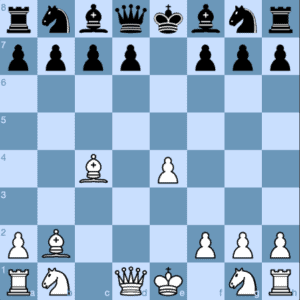 The Danish Gambit
The Danish Gambit
White gives up two pawns for speedy development. The two bishops are excellently placed. It is easy to see the appeal for club players; a fast win makes for a good boast after the match.
Black needs to know specific lines from this position to avoid falling foul of some fast tactical blows.
Spoiling the Fun
I was interested to see what Simon and Blair would recommend for Black to stop White having all the fun. This is a full repertoire for Black and there is little point in having plenty of dynamite for the Ruy Lopez if we have no way of blowing up the Danish Gambit.
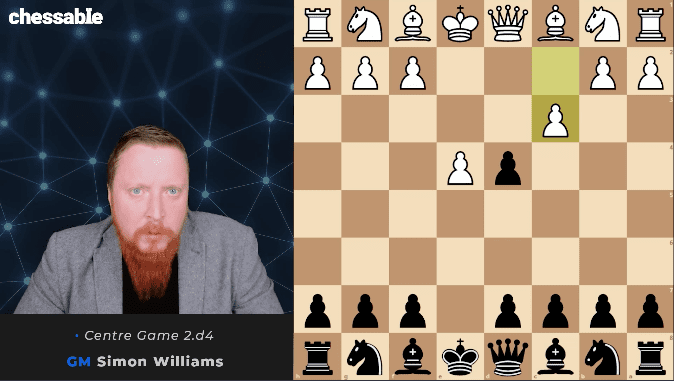
Or, as Simon puts it, ‘We want to be the guy attacking, right?’ To that end, the authors propose striking back immediately in the centre.
1 e4 e5
2 d4 exd4
3 c3 d5!
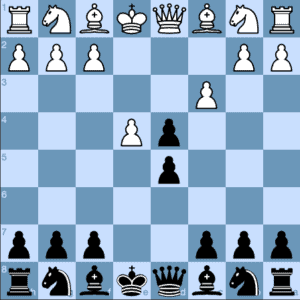
The Danish Gambit Declined
This is precisely what no Danish Gambit player wants to see as White. They will not find their usual fun after this move.
4 exd5 is the best move for White. The course explains why the alternative pawn capture is incorrect.
‘4.cxd4? This is a poor move as following Black’s reply of 4…dxe4, White must take an age to regain his lost pawn. If he fails to attempt this, Black should simply develop normally with moves such as …Nf6, …Bd6, …O-O and …Re8 with a clean pawn advantage. White does not have any compensation to speak of.’
4 …Qxd5
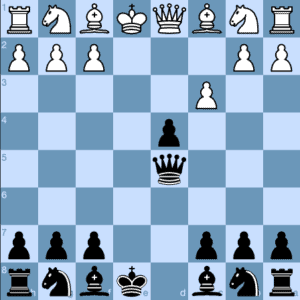
Tutors warn students against bringing out the queen so early in the game, but here there is logical justification.
‘With White having committed to pawn to c3 the Queen is beautifully placed on d5 and there is no immediate threat of Nc3.’
5 cxd4 Bb4+
6 Nc3 Nf6
7 Nf3
Theoretical Twist
Here we see a theoretical twist.
‘The main move here for Black is 7…Bg4. This is a fine move but requires detailed theoretical study and we want to keep matters much easier whenever possible and this is one such situation.’
The recommendation is:
7 …Qa5
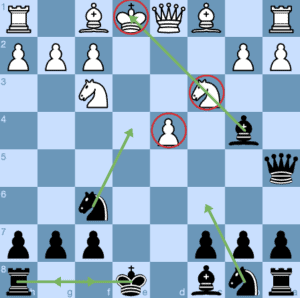
The arrows helpfully highlight the ease at which Black can continue to develop and then start to exert real pressure on the white position.
The appeal of this course is not only that it makes the 1 e4 e5 player feel better prepared and more comfortable against anything White decides to do from move two onwards, but also how logical and easy to understand the recommended lines are for students.
The Danish Gambit is ineffective against this solid and sensible approach. Indeed, White may have to worry about the isolated queen’s pawn, which could become a target.
All Black needs to do is remember up to move seven and then keep in mind the basic themes highlighted above. It certainly makes life a lot easier than trying to keep White’s torpedo bishops at bay in the main line.
1 e4 e5 Club Player’s Dynamite

Head here for further details on the course.







